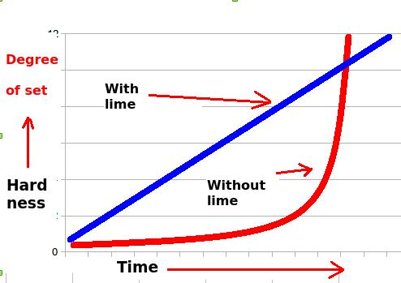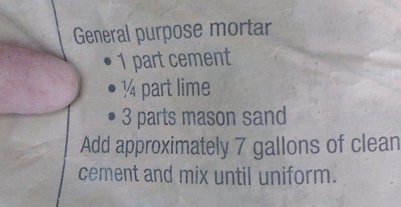Why add lime to Portland cement.
This is a very frequently asked question.
This should explain another mystic secret.

This chart shows how lime starts the initial set of cement mortar, and delays the final set.
Mortar is not firm enough to rod off or work with until it starts to set. For example, a finish coat of stucco is to be rubbed with a rubber float when it starts to set up. Without lime to add an early firmness to the mortar, one would have to wait a long time for the finish to start to set, and not have enough time to float their wall or section.
Lime is used in cement mortar for bricks, stones and whatever.
This explains tooled stucco details and work like beaded joints in stone work. The mortar was firm enough to shape, yet there was time to shape the mortar. An example of this is an apple pie. When the pie comes out of the oven, it is too gooey to slice. Once the pie cools, a neat slice can be made.
